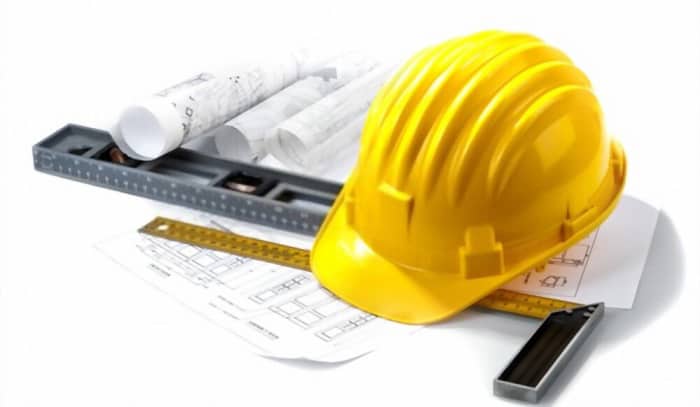OSHA requires workers to wear hard hats when working in hazardous environments involving the risks of falling or flying objects, electrical shocks, and burns. Hard hats are the best ally for workers in multiple fields.
But just like other types of PPEs, they have an expiry date which isn’t printed directly on the product. So, how long do hard hats last? How to read a hard hat expiration date? Find the answer in our brief guide below.
Table of Contents
How to Read a Hard Hat Expiry Date?
What to prepare to read the expiry date of hard hats
To figure out the expiration date on hard hats, you will need your hat and your phone or computer to access the manufacturer’s website.
Step 1. Find a clock-like symbol inside the helmet
To begin, flip your hat over and look at its inside. You will find a hard hat date stamp below the brim, which looks like a clock face.
This stamp tells us the manufacture date of the hat. You will use it to calculate the expiry date.
Step 2. Read the month of manufacture
The stamp contains numbers from one to twelve on the edge, representing the months of a year. In the center, there is another number and an arrow.
To read the month of manufacture, you need to look at the number at which the arrow points. That is the month the hat was made.
Step 3. Read the year of manufacture
On both sides of the arrow, you will find two numbers. These digits combined tell the year of manufacture. For example, 2↑2 means the helmet was made in 2023.
If the arrow points at ten and the number in the center is 22, your hard hat was produced in October 2022.
Step 4. Calculate hard hats expiry date
Now, you have the manufacture date. You will need to calculate the hard hat’s expiry date using its shelf life, which varies among manufacturers. Below are the lifespan of some popular brands’ hard hats:
- 3M: The suspension – 12 months, the shell – 2 to 5 years
- Bullard: The suspension – 12 months, the shell – 2 to 5 years
- Pyramex: up to 5 years
- JSP: 6 months to 2 years under regular use, with 5 years being the maximum
- Arco: up to 5 years
- Centurion: up to 5 years
You should check the brand’s website to know the exact hard hat shelf life it recommends. Then, add the number to the manufacture date to get the expiry date.
For example, a hat that was made in October 2022 with a lifespan of 2 years will expire and lose its protective functions in October 2024.
Step 5. Check for a square symbol if you don’t see a clock-like one
Some brands do not use a clock-like stamp to indicate the hard hat manufacture date. So, how to tell the expiry date if you can’t find a round stamp?
Instead of a clock-like stamp, you might find a square one, which is divided into four smaller squares. It also has a number in the center.
The number indicates the year of manufacture, while the small squares represent the quarters of a year.
The top left square stands for the first quarter (from January to March), and the months progress in a clockwise direction, with the bottom left square representing the fourth quarter (from October to December).
If the stamp on your hat has the number 21 in the center and a dot in the top left square, it means the product is made between January and March 2021.
Where Can You Find the Hard Hat Expiry Date?
You won’t find a hard hat expiry date. Instead, you’ll find the manufacture date, usually below the brim. Then, you should add the hat’s assigned shelf life to this date to calculate the expiry date.
To know the lifespan of a hard hat, you must check the brand website for specific information.
What’s the Maximum Time I Can Use a Hard Hat?
How many years is a hard hat good for? The answer depends on the hat’s brand and your usage. Theoretically, you can wear a hard hat up to its expiry date, which means five years at maximum.
However, the PPE won’t last that long if it is exposed to sunlight and dirt daily.
When Should a Hard Hat Be Replaced?
Oftentimes, you will have to replace your hat before its expiration date. The durability of your hat depends on the following factors:
- The frequency of use
- Chemical, direct sunlight, and extreme temperature exposure
- Contact with heat
If you wear your hat every weekday, we advise you to replace the suspension every twelve months and the shell every two years, even if they appear to be in perfect condition and regardless of materials (carbon fiber or otherwise).
The time also fluctuates if you are under one of these circumstances:
- The hat is damaged: You need to replace the PPE immediately once it has protected your head from an impact or burn, even if it shows no visible damage.
- The hat loses its glossy finish: A hard hat will lose its glossy finish after being exposed to chemical, heat, or UV radiation for a long period. It usually means the PPE has lost its strength and protective functions.
Tips to Lengthen the Lifespan of Your Hard Hat
How long a hard hat can last depends on how well you take care of it. Follow the instructions below to use and store the PPE properly.
- Don’t store hard hats near ovens, windows, or furnaces.
- Don’t decorate them with stickers and use adhesives or chemicals on them.
- Do not attempt to modify your hat and continue wearing it after it is damaged.
- Do not alter your hat for convenience and comfort of wear.
- Keep it out of reach of children.
- Inspect the suspension and shell before each use.
Conclusion
Hard hats, gloves, and goggles are all crucial for protection in hazardous working environments. Make sure you understand their properties and wear them appropriately.
When you know how to read a hard hat expiration date, you can better ensure your safety.
So, don’t hesitate to share our article with your friends and colleagues. In addition, feel free to browse our website for more safety work advice. Thank you for reading!

Veronica is our content editor. She is a talent in delivery. Her main work is editing and writing articles that are both informative and simple to follow. She is in charge of synthesizing our understanding of what personal protection equipment (PPE) is needed in each job, how to best apply it, and how to visualize that equipment.





